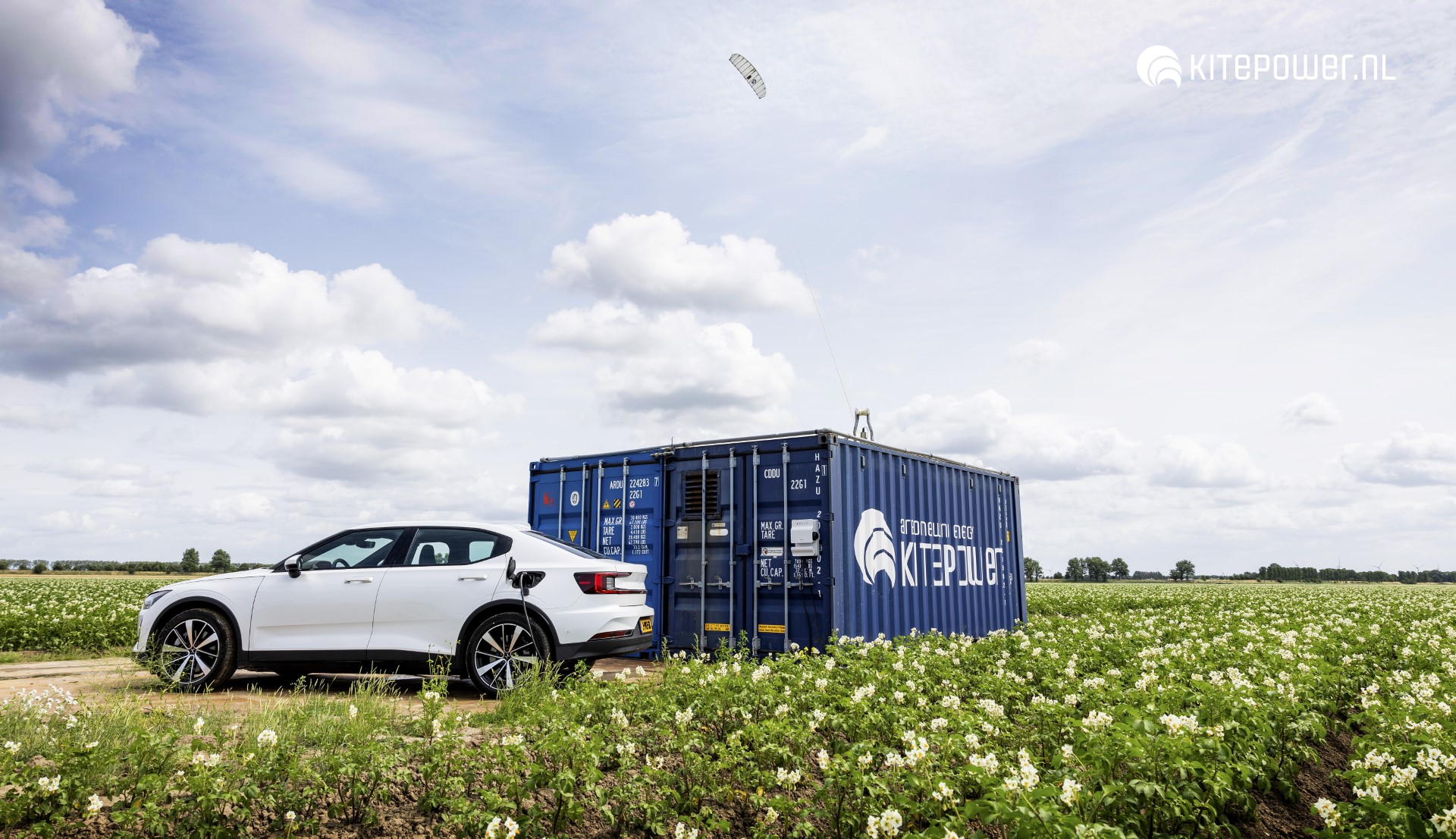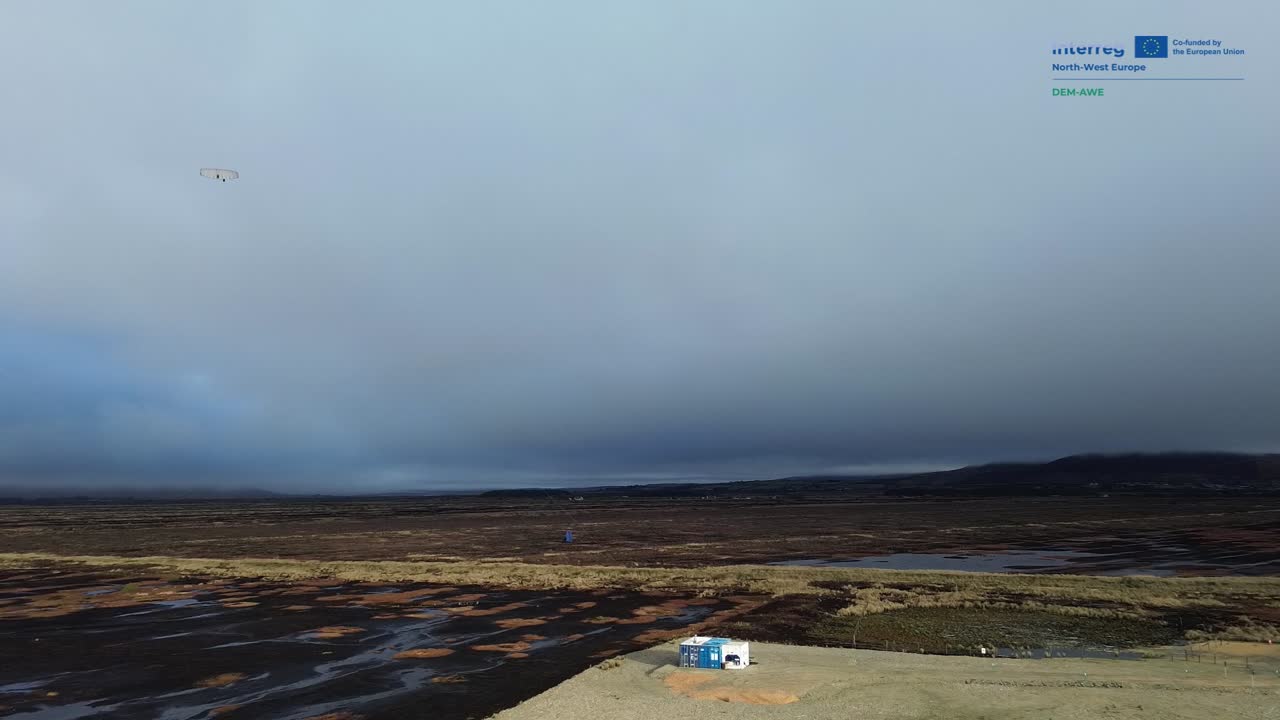As Europe accelerates its transition toward a decarbonized energy system, there is an urgent need for innovative renewable energy technologies that are adaptable, mobile, and capable of reaching underserved and off-grid locations. The DEM-AWE project has taken a decisive step in that direction, showcasing the transformative potential of Airborne Wind Energy through a pioneering demonstration of the Kite-Battery Energy Storage System (K-BESS).

An innovative approach to off-grid renewable power
Building on insights from the previous MegaAWE initiative, DEM-AWE demonstrated how kite-powered energy storage can become a flexible, mobile, and scalable renewable energy solution. The project focused on deploying the K-BESS system, developed by Dutch AWE company Kitepower, in real-world environments in Ireland and the Netherlands. This marked a critical milestone toward commercial readiness for AWE systems.
Target applications include remote locations such as islands, off-grid communities, quarries and remote infrastructure construction sites where diesel generators are often the only option. AWE’s low footprint and portability make it a promising tool to extend the reach of clean energy, supporting the broader goals of the European Green Deal and energy resilience across North-Western Europe.
Real-world demonstration in Ireland and the Netherlands
The demonstration campaign spanned 18 months and included extensive field testing at RWE’s dedicated AWE test site in Bangor Erris, County Mayo, Ireland. This challenging environment has enabled critical validation of the system’s robustness, control mechanisms, and operational reliability, all key factors for deployment in remote and harsh conditions.
The automated battery component, developed in partnership with batteries supplier Greener Power Solutions, was successfully integrated and tested in Ireland. The complete K-BESS system was later deployed in a pilot project in the Netherlands with construction firm Dura Vermeer, where it has been powering electric excavators and trucks during a riverbank renovation. This deployment shows that AWE can directly contribute to decarbonising large-scale construction operations.
Mapping market potential and regulatory pathways
In addition to field testing, DEM-AWE also focused on assessing AWE’s deployment potential across North-West Europe. The consortium developed a GIS-based methodology for site identification, estimating the regional potential of AWE systems in Germany, Ireland, and the Netherlands, with final results for France coming soon. Thousands of potential sites for AWE AWE operation have been identified and tens of Gigawatts can be deployed across Europe. These studies are essential to define market depth, optimize deployment strategies, and inform policy frameworks that enable the safe and effective integration of tethered flight AWE systems.
At the national level, three webinars were organised, two for Irish stakeholders and one for France, to build awareness, gather feedback, and foster policy dialogue.
A collaborative effort
Funded by Interreg North-West Europe, the DEM-AWE project brought together a diverse and experienced consortium:
- Airborne Wind Europe (AWEU) – Project lead, coordinating outreach, policy engagement, and communication.
- Kitepower – Technology developer and demonstrator.
- Laminak Energy – Commercialization support and project management.
- Mayo County Council – Local engagement and permitting.
- With strong support from RWE, facilitating the crucial testing phase in Ireland.
Looking ahead: Powering EU remote construction, quarries,islands and beyond
With DEM-AWE now successfully concluded, the consortium is shifting focus towards the actual roll-out of the first systems in the construction and quarry markets as well as to EU island communities which often face high electricity costs and heavy reliance on fossil fuels.
Drawing on project insights, the AWE sector aims keep showing how mobile systems can deliver clean, autonomous power to remote and isolated communities and projects, enhancing both sustainability and energy sovereignty.
As results continue to emerge, including upcoming analyses on K-BESS market entry, DEM-AWE has laid a strong foundation for the next generation of AWE technology in Europe.
Though this chapter ends, the momentum continues. The experience, partnerships, and knowledge gained, open the door to future collaboration, from new demonstration sites and regional integration to commercial-scale deployment.
